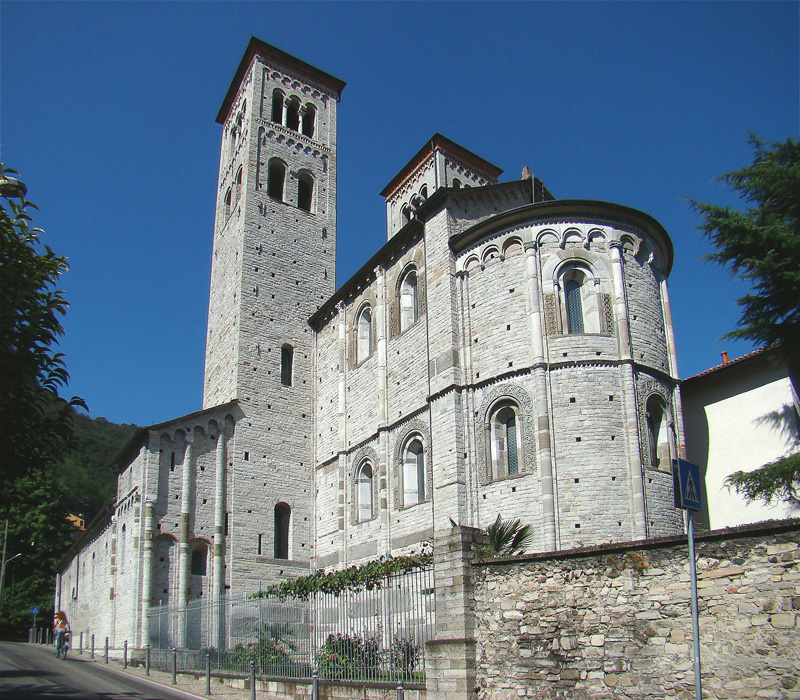Sant'Abbondio Di Como on:
[Wikipedia]
[Google]
[Amazon]

 The Basilica of Sant'Abbondio is a Romanesque-style 11th-century
The Basilica of Sant'Abbondio is a Romanesque-style 11th-century
Page at Arte nel Medioevo
{{DEFAULTSORT:Abbondio Como

 The Basilica of Sant'Abbondio is a Romanesque-style 11th-century
The Basilica of Sant'Abbondio is a Romanesque-style 11th-century Catholic
The Catholic Church, also known as the Roman Catholic Church, is the largest Christian church, with 1.3 billion baptized Catholics worldwide . It is among the world's oldest and largest international institutions, and has played a ...
basilica church located in Como
Como (, ; lmo, Còmm, label=Comasco dialect, Comasco , or ; lat, Novum Comum; rm, Com; french: Côme) is a city and ''comune'' in Lombardy, Italy. It is the administrative capital of the Province of Como.
Its proximity to Lake Como and ...
, region of Lombardy
Lombardy ( it, Lombardia, Lombard language, Lombard: ''Lombardia'' or ''Lumbardia' '') is an administrative regions of Italy, region of Italy that covers ; it is located in the northern-central part of the country and has a population of about 10 ...
, Italy
Italy ( it, Italia ), officially the Italian Republic, ) or the Republic of Italy, is a country in Southern Europe. It is located in the middle of the Mediterranean Sea, and its territory largely coincides with the homonymous geographical ...
.
Description
The current edifice rises over a pre-existing 5th century Palaeo-Christian church entitled to Sts. Peter andPaul
Paul may refer to:
*Paul (given name), a given name (includes a list of people with that name)
* Paul (surname), a list of people
People
Christianity
* Paul the Apostle (AD c.5–c.64/65), also known as Saul of Tarsus or Saint Paul, early Chr ...
, built by order of St. Amantius of Como, third bishop of the city. Erected c. 1 km outside the city's walls, it was intended to house several relics of the two saints which Amantius had brought from Rome.
The basilica acted as bishop's seat until 1007. Six years later bishop Alberic moved the seat within the walls. The basilica was then entrusted to the Benedictines who, between 1050 and 1095, rebuilt it in Romanesque style. The new edifice was dedicated to Amantius' successor, Abundius
Abundius (also Abondius, Abundias, or Abbondio; early fifth century – 469), venerated in the Catholic Church as Saint Abundius, was a bishop of Como, Northern Italy.
Biography
Abundius was born at Thessalonica. Around 448 Abundius became the ...
. The structures of the Palaeo-Christian church, discovered in 1863 during a restoration, are still marked by black and pale marble stones in the pavement.
The new basilica had a nave and four aisles. It was consecrated by pope Urban II
Pope Urban II ( la, Urbanus II; – 29 July 1099), otherwise known as Odo of Châtillon or Otho de Lagery, was the head of the Catholic Church and ruler of the Papal States from 12 March 1088 to his death. He is best known for convening th ...
on June 3, 1095.
The church has two notable bell towers rising at the end of the external aisles, in the middle of the nave. The sober façade, once preceded by a portico, has seven windows and a portal. Notable is the external decoration of the choir's windows. There are also Romanesque bas-reliefs and, in the apse, a notable cycle of mid-14th-century frescoes. Under the high altar are the Abundius' relics.
The medieval monastery annexed to the church, recently restored, acts as the seat of the local faculty of jurisprudence.
References
External links
Page at Arte nel Medioevo
{{DEFAULTSORT:Abbondio Como
Abbondio Abbondio is the name of:
People
* Abbondio Marcelli (1932–2015), Italian rower
* Abbondio Sangiorgio (1798–1879), Italian sculptor
* Abbondio Smerghetto (1931–2018), Italian rower
* Abundius, saint
Places
* Sant'Abbondio, former municipali ...
Former cathedrals in Italy
11th-century Roman Catholic church buildings in Italy
Churches completed in 1095
Romanesque architecture in Lombardy
Churches in the province of Como